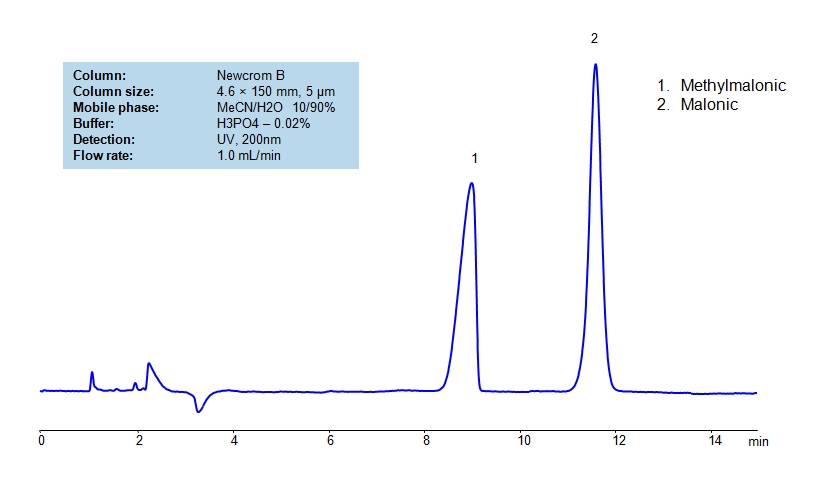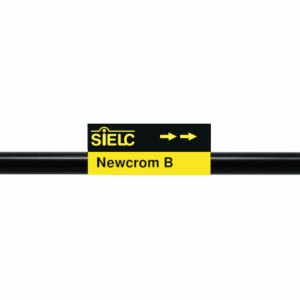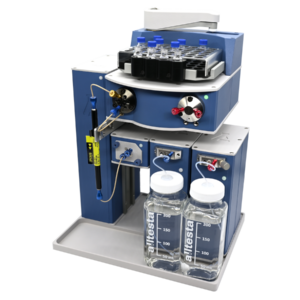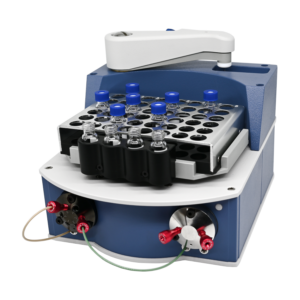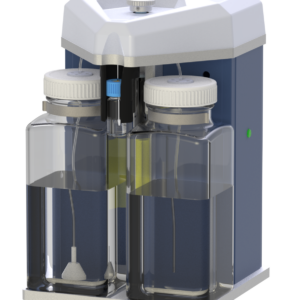HPLC Method for Methylmalonic Acid, Malonic Acid on Newcrom B by SIELC Technologies
High Performance Liquid Chromatography (HPLC) Method for Analysis of Methylmalonic Acid, Malonic Acid .
Methylmalonic Acid is an organic acid with the chemical formula C4H6O4. It works as an intermediate in the breakdown of certain amino acids and fatty acids. Elevated levels of Methylmalonic avid can be a sign of a Vitamin B12 deficiency or Methylmalonic acidemia, which is a rare genetic disorder where the previously mentioned acid is not properly metabolized, leading to its accumulation.
Malonic Acid is an organic acid with the C3H4O4 chemical formula. It has a variety of uses from synthesis to preservatives. When it comes to synthesis, it is often used in industrial means. and especially dyes for natural fibers. Besides industrial use, in laboratory environments, it is used in preparation of tris-maleate, sodium maleate buffers, and maleate salts.
Methylmalonic Acid, Malonic Acid can be retained and analyzed using the Newcrom B stationary phase column. The analysis utilizes an isocratic method with a simple mobile phase consisting of water and acetonitrile (MeCN) with a triethanolamine buffer. Detection is performed using UV.
| Column | Newcrom B, 4.6 x 150 mm, 5 µm, 100 A, dual ended |
| Mobile Phase | MeCN/H2O – 10/90% |
| Buffer | H3PO4 – 0.02% |
| Flow Rate | 1.0 ml/min |
| Detection | UV 200nm |
| Class of Compounds | Acid, Hydrophilic, Polar |
| Analyzing Compounds | Methylmalonic Acid, Malonic Acid |
Application Column
Newcrom B
Column Diameter: 4.6 mm
Column Length: 150 mm
Particle Size: 5 µm
Pore Size: 100 A
Column options: dual ended
Methylmalonic Acid

